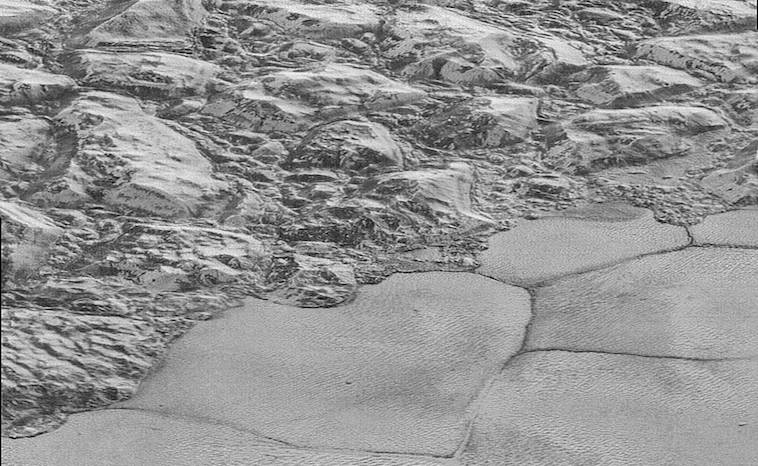New Horizons Kuiper Belt Mission

New Horizons space probe conducted a flyby of Pluto in 2015. Now NASA wants to send it further into the Kuiper Belt. Read on to learn more about New Horizons next adventure.
In 2006, NASA launched the New Horizons space probe to study the planet, Pluto. Up to that point, NASA images sent back by Hubble only gave them a pixelated version. However, it did not provide the answers they were looking for. In 1989, a team led by Alan Stern worked to develop a probe that would give them details about the icy planet.

NASA/Johns Hopkins University Applied Physics Laboratory/Southwest Research Institute, Public domain, via Wikimedia Commons
Image of ice mountains on the dwarf planet PlutoNew Horizons Launch
In January of 2006, NASA launched New Horizons to explore Pluto. It took almost ten years for New Horizons to reach Pluto. New Horizon carried seven new instruments to help gather data.
- Ralph: Visible and infrared imager/spectrometer
- Alice: Ultraviolet imaging spectrometer
- REX (Radio Science EXperiment): Measures atmospheric composition and temperature; passive radiometer.
- LORRI (Long Range Reconnaissance Imager): Telescopic camera
- SWAP (Solar Wind Around Pluto): Solar wind and plasma spectrometer
- PEPSSI (Pluto Energetic Particle Spectrometer Science Investigation): Energetic particle spectrometer; measures the composition and density of plasma (ions) escaping from Pluto’s atmosphere.
- VBSDC (Venetia Burney Student Dust Counter): Built and operated by students at University of Colorado; measures the space dust peppering New Horizons during its voyage across the solar system
Once it reached Pluto and sent back all its data, NASA set its goal on achieving the Ultima Thule located in the Kuiper Belt. NASA captured an image of Ultima Thule almost exactly where they predicted its location. Ultima Thule was 107 million miles (172 million kilometers) from the New Horizons spacecraft and 4 billion miles (6.5 billion kilometers) from the Sun.
Ultima Thule Observation
Once they knew they had Ultima Thule pinpointed they quickly worked to find out more about it. From here on, they gathered in Senegal in July 2018, to witness an occultation of Ultima Thule.
An occultation occurs when an object passes in front of a bright object and blocks the light. They used the Hubble telescope to witness the event. As a result, NASA can further project the course set for New Horizons. They learned quite a bit of information from the occultation.
As a result, NASA team members say MU69 (Ultima Thule) may not be not a single spherical object. Furthermore, they suspect it could be an “extreme prolate spheroid” – think of a skinny football – or even a binary pair. The odd shape has scientists thinking two bodies may be orbiting very close together or even touching. However, the object could have a large portion of it gone. Meanwhile, the observation team concluded that the object may be 20 miles (30 kilometers) long. On the other hand, if a pair of objects exists, each may reach about 9-12 miles (15-20 kilometers) in diameter.
“This new finding is simply spectacular. The shape of MU69 is truly provocative, and could mean another first for New Horizons going to a binary object in the Kuiper Belt,” said Alan Stern. So far, the NASA team has collected 5 occultations of Ultima Thule.
New Year Discovery
In January of 2019, New Horizons will fly by Ultima Thule. For this reason, NASA has tried to learn as much as they can to protect the spacecraft. When New Horizons flies by it, MU69 will be the most distant object ever explored by a spacecraft, over a billion miles farther from our sun than Pluto. By checking the NASA Horizon’s home page, you can follow this exciting time in our space exploration’s search for new worlds.
